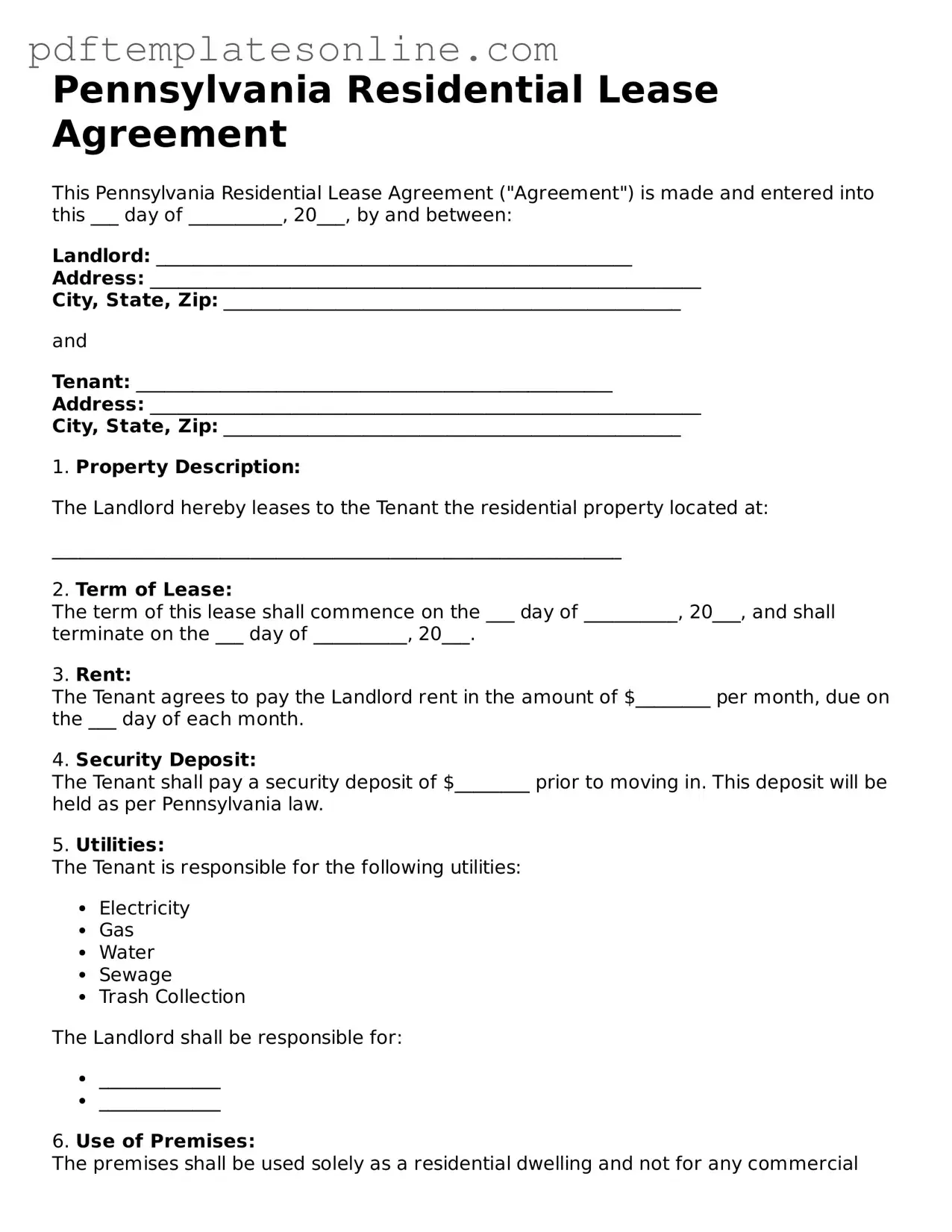Filling out the Pennsylvania Residential Lease Agreement form can be a straightforward process, but many individuals encounter common pitfalls that can lead to complications. One frequent mistake is failing to include all necessary personal information. Both landlords and tenants must provide accurate names and contact details. Omitting this information can create confusion regarding responsibilities and rights under the lease.
Another common error involves not specifying the lease term. A clear start and end date are crucial for establishing the duration of the tenancy. If this information is left blank or is vague, disputes may arise regarding the lease's validity and the obligations of each party.
Many people overlook the importance of detailing the rental amount and payment terms. It is essential to state the monthly rent clearly, along with any additional fees or deposits. Without this information, misunderstandings about payment expectations can lead to financial disputes.
Inadequate descriptions of the property can also pose a problem. The lease should include a detailed description of the rental unit, including the address and any specific features. A lack of clarity may result in disagreements about what is being rented and the condition of the property.
Another mistake involves failing to address maintenance responsibilities. The lease should clearly outline who is responsible for repairs and maintenance. If this section is vague or missing, it can lead to conflicts over who is liable for damages or necessary repairs.
People often neglect to include information about security deposits. The lease should specify the amount of the deposit, the conditions for its return, and any potential deductions. This oversight can lead to disputes at the end of the lease term regarding the return of funds.
Additionally, not including rules regarding pets can be problematic. If the lease does not specify whether pets are allowed, it can lead to misunderstandings and potential violations of the agreement. Clear guidelines help prevent disputes between landlords and tenants.
Another frequent error is failing to include provisions for termination of the lease. It is important to outline the conditions under which either party may terminate the agreement, including notice requirements. Without this information, either party may find themselves in a difficult situation if they wish to end the lease.
Lastly, many individuals do not take the time to read the lease thoroughly before signing. This oversight can lead to unexpected obligations or restrictions that could have been avoided. Understanding the terms of the lease is crucial for both landlords and tenants to ensure a smooth rental experience.
